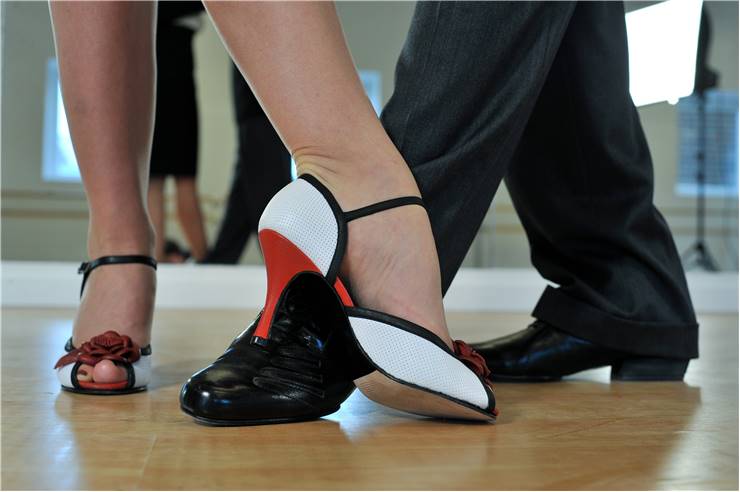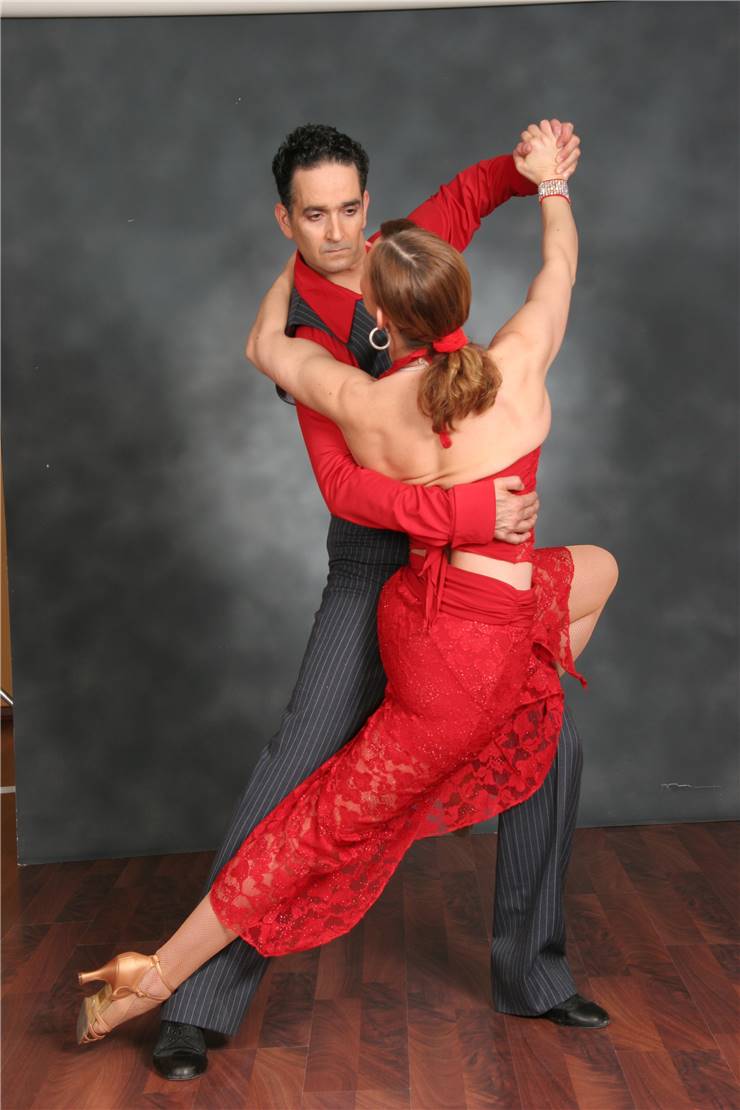Tango Shoes - Characteristics of Women's and Men's Tango Shoes
Tango is an emotional and instinctive music, which means that easy movement across the dance floor is crucial for establishing a good connection with the music and reacting to the partner's moves. Since the tango first emerged from the working-class establishments in Buenos Aires and Montevideo and reached higher-end dance floors in both Argentina and the rest of the world, the dancers of tango preferred to have a softer type of shoes that eventually solidified into purpose-built dance shoes that are perfect for enjoying tango music and tango dance.
Beginners in the world of tango dancing will need to ensure that their feet are well protected in comfortable footwear that will enable them to effortlessly move across the dance floor during practice sessions, social dancing, and competitions. Choosing a right shoe is crucial for getting a sense of awareness how your body is interacting with the ground, reaching the proper alignments of the body, and developing the strength, balance, and confidence that is needed for execution of perfect tango dance.

As a rule of thumb, the tango dancing beginners do not need to purchase purpose-built tango shoes immediately, since they can get the most of the benefits of such shoes by getting a good jazz dancing shoes. Men's jazz shoes are usually made of leather, with not to still uppers and a flexible sole that will enable them to keep a good awareness of the dancing floor. If jazz shoes are also unavailable, men can also go for ordinary leather shoes, but it is highly recommended to practice in models that have softer soles . Some beginners (and even seasoned veterans) of tango dance also prefer to do some training sessions wearing nothing but socks, which enables them to train how to keep certain positions and alignments of their body.
Tango can be danced by anyone, but good footwear is essential for proper execution of its moves
Women’s tango footwear is famous for being inclusive to higher heels that go all the way to 9 cm of height, but beginners are recommended to stick to dancing shoes that are more closer to the ground. The novice female dancers are even recommended to take flat dancing shoes with the minimal heel, which will enable them to gain needed confidence when practicing faster moves, more elaborate tango dance forms, and proper body alignments. When the basics are covered, women are encouraged to switch to shoes with a higher heel (which have to be strong and durable) because such shoes will enable them to more easily place their weight on the ground.
And of course, one of the most important things that you need to take in consideration when picking tango shoes for yourself is to make sure that you feel comfortable in them. They would not be so tight that they prevent circulation and cause sores, but it is not recommended to practice in too loose footwear. Both men and women will spend a majority of time dancing with feet being very close to the ground, and their balance being held on the balls of their feet. Having proper shoes that are flexible enough to support small feet movements while you rotate on your hell and the uppers are not stiff and causing you irritation is crucial to your feeling great while dancing the tango. Novices are also discouraged to use footwear that is slippery and that have opened toe (for added protection). Commonly, leather shoes are more sturdy but slippery, while suede shoes provide more grip and flexibility but do require more maintenance.
Men’s Tango Shoes
Differences between regular street shoes and tango dancing shoes for men is less apparent than in female shoes, but while these differences are not immediately visually apparent, their impact on the feel in the foot is easily noticeable by tango dancers. Having good tango shoes means not only that men will feel more comfortable in them during their practice, social dances, and competitive dance, but also that they will get an immediate advantage that will help them to achieve a better connection with their partner, dance floor, and music.
Men tango footwear should have classic form
Here are the most important features of men tango shoes:
- Forma - The forma of tango shoes is the basic mold that determines the basic shape of the shoe. This underlying shape is important because while external visual designs and materials can change, the basic forma of the shoe will determine how they fit you. Traditionally, forma of both men and women shoes comes in slim, medium or generous sizes.
- Size - Sizes of men tango shoes usually cover the sizes between 39 and 46 (6.5-13 in the US, and 5.5-12 in the UK).
- Soles - Soles of men shoes need to be flexible and articulated, which will allow men to pivot as easily as women. Stiff soles are undesirable because they can limit foot placement and moves such as pivoting. Soles also have to be thinner, so that dancer can feel the floor better. It is also highly desirable that soles have no “overhang”, enabling you to place your feet very closely to your partner with a reduced chance of accidentally touching them and causing an injury or break in the flow of the dance routine. Soles can be made from leather (for easier sliding across the floor) and suede (for more grip on slippery floors).
- Uppers - Men’s tango footwear is best if the uppers are softer and flexible, enabling easier articulation of foot.
- Heel - The height of the heel in men shoes can vary in size. Dancer needs to pick what heel size fit their needs.
- Comfort - Since tango dance is energetic and fast, feet of the dancers go through a lot of strain during even a single dance. Because of this, men’s tango shoes need to be comfortable and slightly flexible. The leather material provides stronger and more firm grip on the foot, while suede is more flexible and can be more enjoyable to wear.

Female Tango Shoes
The differences between regular street shoes and tango dancing shoes are of course much stronger for females than for males. The changes are both visual and structural. Tango is well known to be a highly elegant dance, and female dancers enjoy to find extravagant and stylish shoes that will also fit the requirements of their dance. Female dancers also need to take special care about preserving their feet because their move sets will put a lot of strain on their heels and ball of the foot when performing “pointe” moves, pivoting and taking numerous powerful steps in quick succession. If female dancer starts feeling any foot issues or aggravating existing foot issues, she should immediately contact a doctor or a specialist about picking proper shoes that will provide better comfort.
Women tango shoe has to have enhanced heel
Female tango shoes are distinguished by the following features:
- Forma - Similarly as in male shoes, forma is a mold that determines thebasic shape of the shoe. It comes in three sizes ( slim, medium and generous), and it and the size of the shoe is the easiest way you can find the shoe that will fit you best.
- Size - Female shoe sizes for tango dancing usually are set between 35 and 42 (5-11 in the US, and 3-9 in the UK)
- Soles - Soles of female tango shoes need to be slim but strong. Sole at the ball of the foot has to be smooth (leather or suede) so that dancer can perform pivoting, while the arch (also called shank) that connects the heel and the fingers need to be very stiff and flexible in the point of interaction.
- Heel cage - Heel cage can be both closed or with a slingback. It is recommended for beginners to first stick with closed heel cage.
- Heel - Heel of the female tango shoe need to be very sturdy , and it has to be strongly connected to the heel cage . Heels that show the sign of flexibility should be avoided.
- Heel position - It is very important that shoe heel is situated in the right middle of your foot heel, enabling the female dancer to position her weight equally distributed between the heel and the ball of the feet. If the weight is distributed in any way more forwards, back, left or right, the dancer is immediately elevating the chance of injury (either fall or direct injury to the ankle).
- Heel height - Total size of the tango shoe heel is measured from the ground to the point the feet touch the top of the heel. While the heels can start with sizes as low as 6cm, the most female tango shoes are made with the 7cm and 9cm heel height. 6 and 8cm heels are much rarer.
- Toe box - Most tango shoes are open toed, but beginners are encouraged to start with closed toe box to reduce the chance of injury. The toe box should be fit well, and not be too tight. It is preferred that dancing shoes do not scrunch toes together and that they can stay in their natural position.
- Comfort - Tango shoes need to be comfortable, but they need to keep your feet secure because tango dance will push dancers through fast movements, pivots, and rotations. Leather shoes provide more strength, but many female dancers prefer suede lining because it provides a little flex.

